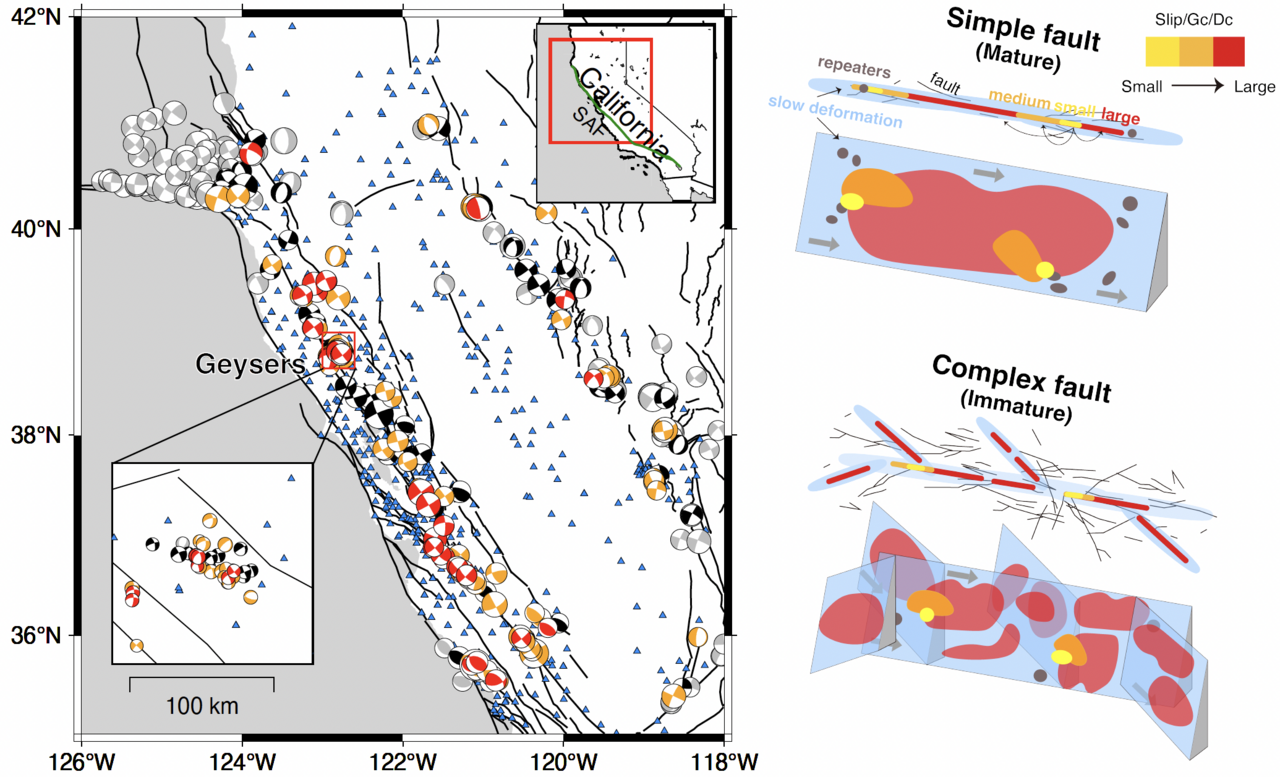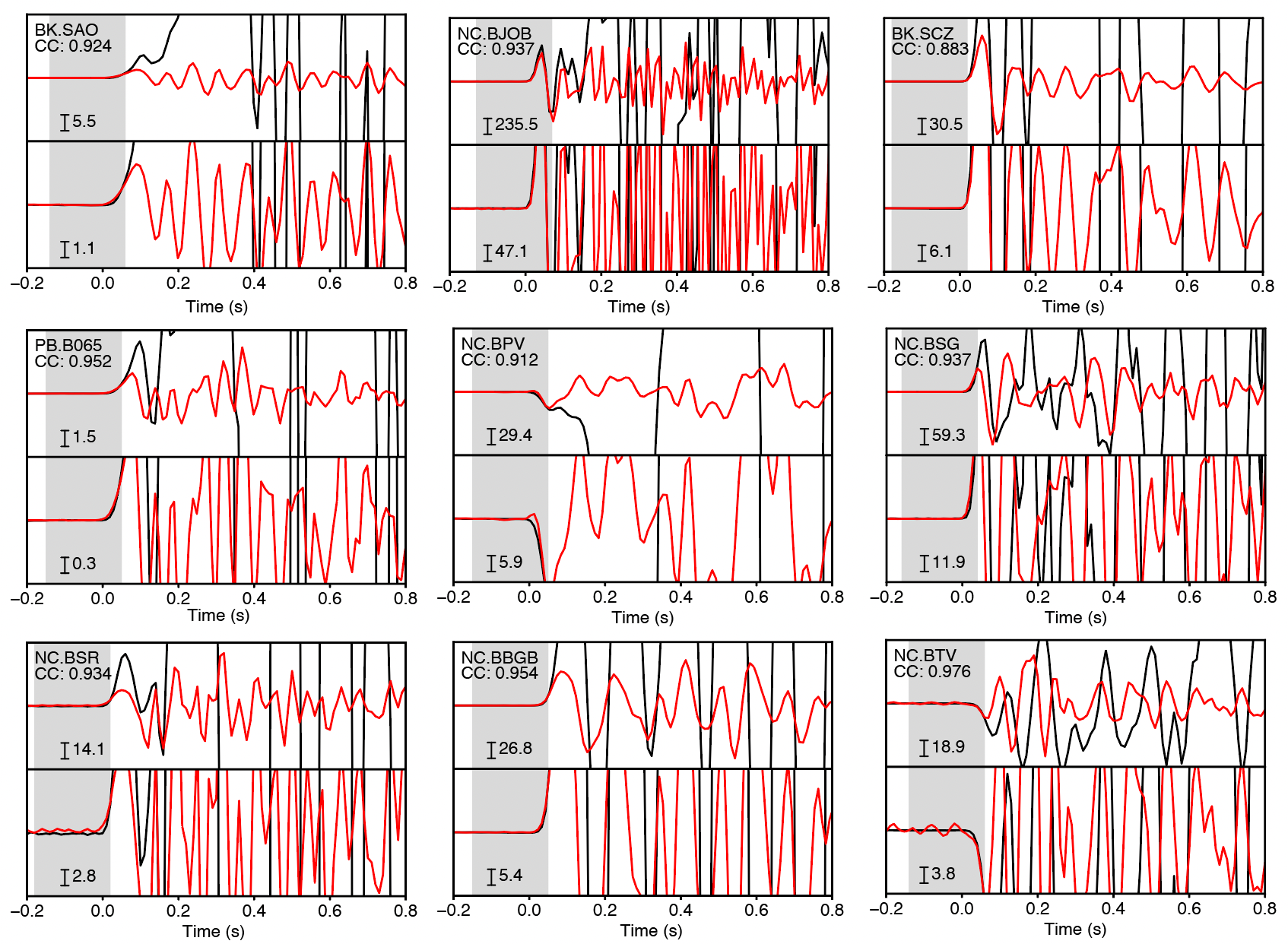Unraveling the Cascading Rupture of Northern California Earthquakes
Published in Earth & Environment

Large earthquakes often begin with a nearly point-like fracture—a tiny crack in the rock—that triggers a complex cascade of fault slippage. This rupture can propagate for hundreds of kilometers, releasing enormous energy and causing devastating shaking. Yet, several fundamental questions remain: Can we predict the cascading rupture process of large earthquakes? Do they exhibit observable features that differ from those of small earthquakes? And is the final magnitude tied to the characteristics of the initial rupture? These questions are critical for advancing earthquake prediction and early warning systems.
A groundbreaking 2019 study in Nature demonstrated that both small and large earthquakes in the Japan Trench exhibit remarkably similar initial waveform characteristics. This finding suggests that the early stage of an earthquake may not dictate its eventual size, shedding new light on the rupture initiation process—though the earthquake physical factors controlling this process remain unclear.
Northern California, with its excellent seismic station coverage and diverse fault behaviors, offers an ideal natural laboratory for earthquake research. In our study, we analyzed roughly 75,000 earthquake records collected over 24 years by high-sensitivity seismometers across Northern California. We identified 125 pairs of extremely similar events and 1,939 pairs of very similar events by comparing large earthquakes (M ≥ 4.0) with small ones (M ≤ 3.0) whose epicenters were less than 100 meters apart. Notably, on simple fault structures, we observed that 44 out of 55 large earthquakes exhibited striking waveform similarity—even when the events were separated by up to 24 years. In contrast, cascading ruptures were rarely observed in complex fault systems. By analyzing fault geometry, we estimated the probability of cascading rupture, offering a pathway toward more quantitative forecasts of future earthquake magnitudes.

Figure 1. Example waveforms comparing seismograms of a large (black) and a small (red) earthquake.
Our research faced several challenges. Due to Northern California’s compact epicentral distances, the waveforms of larger earthquakes were often distorted by instrumental clipping. A major hurdle was developing methods to effectively use these clipped signals. Additionally, we revisited classic earthquake nucleation models. Over 30 years ago, pioneers proposed the pre-slip model and the cascade model as two end-member frameworks for earthquake initiation. With deeper insights into earthquake physics, we now recognize that the cascade model can be subdivided into two variants (currently referred to as the cascading fore-shock model and the cascading rupture model). Our results suggest that the cascading rupture model better explains the observed phenomena, indicating that pre-slip may not be a necessary component in the earthquake nucleation process.
This research not only deepens our understanding of the early stages of earthquake rupture but also highlights how incorporating fault geometry can improve our ability to predict earthquake behavior quantitatively. By addressing these challenges and refining our models, we hope to contribute to more effective earthquake prediction and early warning strategies in the future.
References:
Ide, S. (2019). Frequent observations of identical onsets of large and small earthquakes. Nature, 573(7772), 112-116. https://doi.org/10.1038/s41586-019-1508-5
Ellsworth, W. L., & Beroza, G. C. (1995). Seismic Evidence for an Earthquake Nucleation Phase. Science, 268(5212), 851-855. https://doi.org/doi:10.1126/science.268.5212.851
Follow the Topic
-
Communications Earth & Environment

An open access journal from Nature Portfolio that publishes high-quality research, reviews and commentary in the Earth, environmental and planetary sciences.
Related Collections
With Collections, you can get published faster and increase your visibility.
Geology of the Moon
Publishing Model: Hybrid
Deadline: Jan 31, 2026
Drought
Publishing Model: Hybrid
Deadline: Dec 31, 2025




Please sign in or register for FREE
If you are a registered user on Research Communities by Springer Nature, please sign in